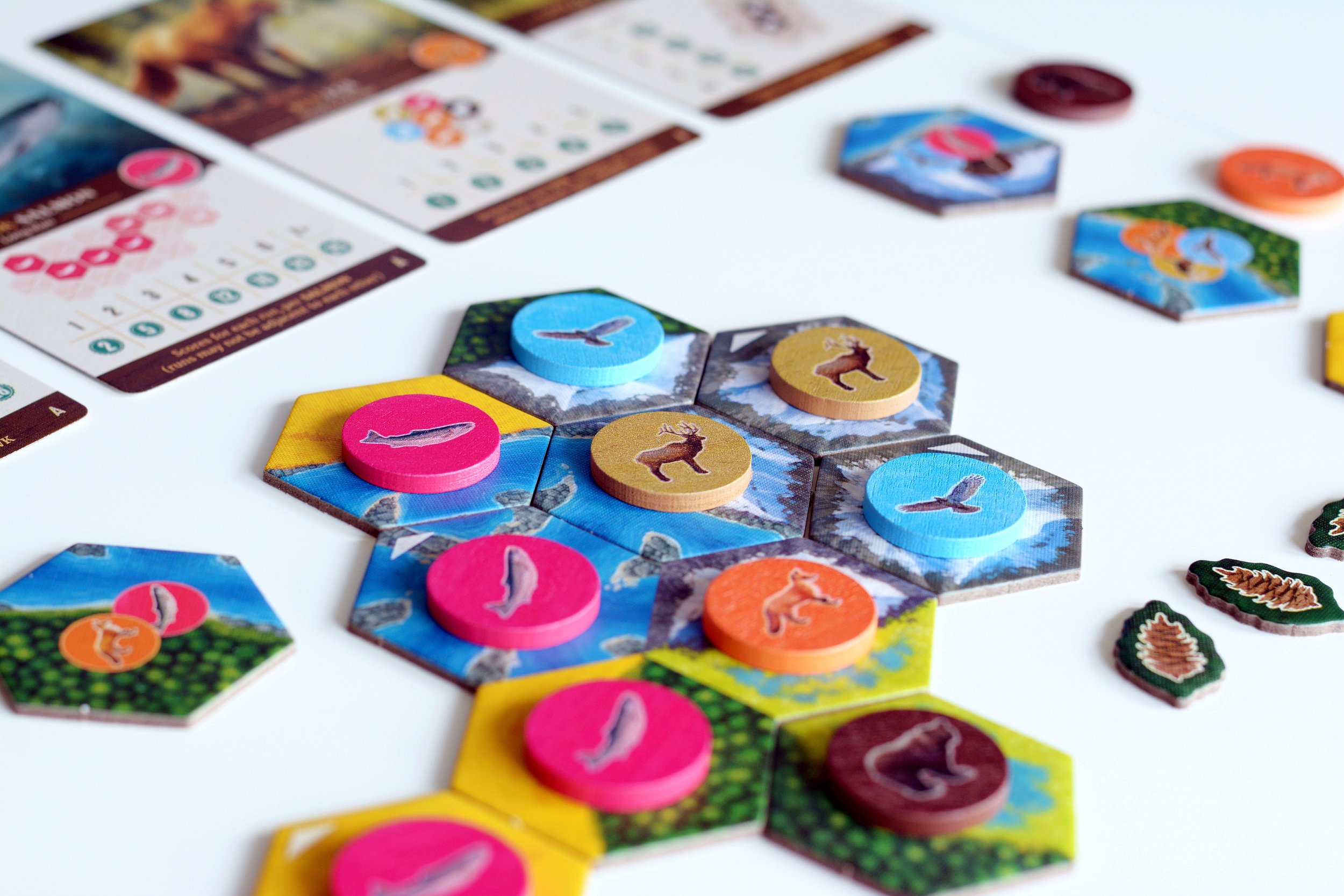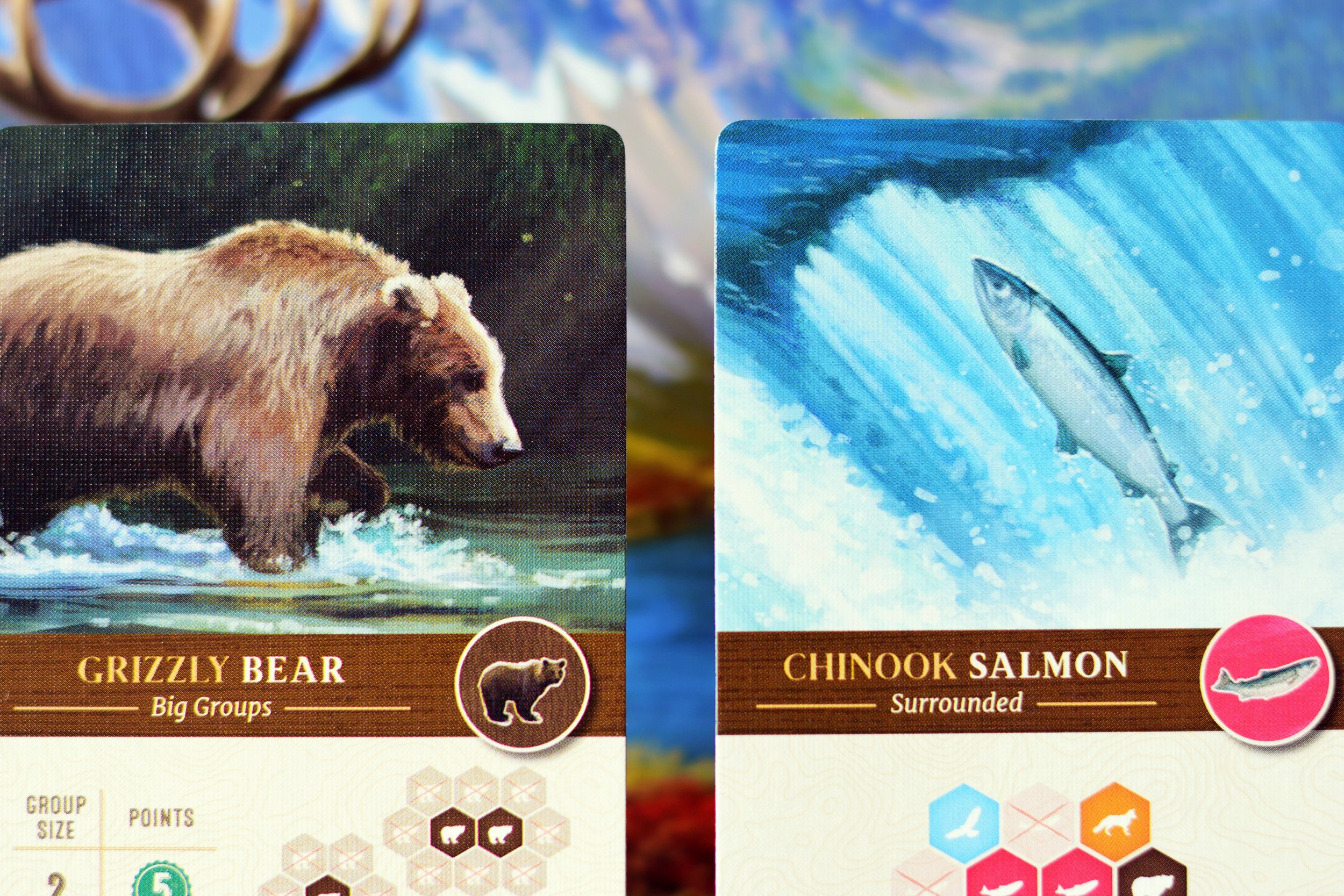Cascadia - A Solo Review
Image: Flatout Games
INTRODUCTION
In light of the turmoil that has transpired these past couple of years and the hardships that we all have endured, it is perhaps not that surprising that board games draped in an endearing theme has proven to be something of a winning formula. Nowhere is this notion more evident than Calico from publisher Flatout Games, a game themed on sewing quilts for cuddly feline companions which turned out to become one of the biggest hits of last year in no small part due to the lovely aesthetics. But behind this deceptively cute façade lies an experience of surprising depth, a game that embodies the “easy to learn, difficult to master” philosophy of board game design to near perfection. As someone who thoroughly enjoyed Calico I have been eagerly awaiting the retail release of Cascadia, the latest game designed by author Randy Flynn and featuring the artistic talents of Beth Sobel.
Full disclosure: a review copy of Cascadia was kindly provided by publisher Alderac Entertainment Group (AEG).
COMPONENTS
When the first images of Cascadia were unveiled to the public I found the aesthetics to be somewhat questionable; a perplexing amalgamation of simplistic components draped in a rather stark colour palette. However, as we all know digital renditions of game components can be deceiving and having played a physical copy of Cascadia I can honestly say that… I am still not overly enthusiastic regarding the overall art style. Make no mistake, Beth Sobel’s illustrations that adorn the wildlife scoring cards are nothing short of sublime; conveying the majestic beauty of the animals that populate the titular North American region. But the artwork on the landscape tiles and the chosen colour palette for the wooden discs combines into a kaleidoscope that is far less endearing or visually soothing compared to Calico, as if these two components are fighting a fierce war for your attention. In terms of component quality, I would describe Cascadia as “fine”. That being said, I am acutely aware that I am most definitely coming off as a pretentious snob and your mileage may vary depending on personal taste.
Photo: Fredrik Schulz
GAME PLAY
A wise person once said “all the best games are easy to learn and difficult to master” and nowhere is this particular philosophy of board game design more evident than in author Randy Flynn’s latest creation. At its core Cascadia is a tile-laying game, over the course of a total of 20 turns players are going to draft habitat tiles whilst simultaneously populating them with tokens representing the animal wildlife one would find in the aforementioned region of North America with the goal of creating the most harmonious ecosystem. Explaining the actual game play can be achieved in literally five minutes. On their turn, players will choose one out of four available pairs consisting of a habitat tile and wildlife token from a central display and then immediately add said combination into their expanding mosaic. The drafted wildlife token can be assigned either to the chosen habitat tile or one previously added to your preserve, where each tile can only contain a single animal type. Once a pair has been chosen, a new tile and corresponding token is drawn at random and added to the central offering thus ensuring there is always four pairs to choose from upon which the game proceeds to the next player in turn-order.
Photo: Fredrik Schulz
As one might suspect given this brief but highly accurate description, Cascadia is a marvellously accessible game; the rules and fundamental mechanisms are incredibly straight-forward to grok for newcomers to the hobby whilst simultaneously providing some meat to the bone for more seasoned board game veterans in large due to the variable scoring conditions. Each wildlife type is defined by a particular set of scoring parameters, foxes for example tend to score an increasing amount of points for being encircled by pairs of other animals excluding another rivalling fox. Whereas the mighty elk instead prefers the company of others, favouring huddling together in large clusters which reward an increasing amount of points based on the formation as dictated by the scoring card. And because each wildlife has four scoring cards to choose from the game provides a great sense of variety and flexibility. There is even a beginner and family version included in Cascadia, which strips away the complexity of the higher tier cards in favour of more straight-forward and unison goals to strive for regardless of wildlife type. And even though I did find some of the wording regarding particular scoring conditions to be a bit ambiguous and open for interpretation, despite the lovely illustrations, there is no denying that Cascadia offers a great deal of variation including scaling difficulty and the way each wildlife manages to feel unique thanks to the selection of scoring cards.
Photo: Fredrik Schulz
So how does Cascadia fare as a solitaire experience? In short, great! Seeing how the core game design could charitably be described as multiplayer solitaire, Cascadia lends itself quite effortlessly to solo play. In fact, the only thing that differs in terms of game play is the way the row of tiles and tokens is quote unquote refreshed from turn to turn. After following the normal rules of choosing a pair and adding them to your expanding habitat, the leftmost wildlife token and tile is simply discarded before refreshing the line back up to four pairs as per the multiplayer rules. This is a simple yet effective way of simulating the churn of the market row which in practice takes about five seconds to execute and requires zero effort on behalf of the solitaire player. And if that was the total extent of the solo mode I would have described it as fine albeit a tad uninspiring. Fortunately, Cascadia provides a bit more meat to the bone by including a selection of game play challenges that also happens to be solo compatible. Each of the fifteen scenarios presents the player with a starting setup in terms of which wildlife scoring card to use for the given session. In addition, the scenarios also feature an increasing level of difficulty often presenting you with the challenge to reach a specified point threshold in addition to additional criteria. It is not revolutionary by any stretch of the imagination but the inclusion of these achievements does provide Cascadia with longevity whilst still retaining the core aspects that makes the game such an enjoyable experience.
FINAL THOUGHTS
Sometimes I just want to sit down to play a game that is not too taxing on the old noggin, something that provides me with a sense of zen without becoming totally meaningless in the process. Cascadia certainly falls into this particular category of game design, where the core experience is so easy to grok whilst simultaneously providing no small amount of intellectual stimulation. Were I to fault the game then it would have to be that the literal luck of the draw can occasionally rear its ugly head. Although you can almost always make due with the tile and token you have at your disposal, there has been instances where I could not draw the desired combo of the token bag if my life depended on it. Then again, I find it difficult to be too upset when the overall game is such an enjoyable experience and one that also translates beautifully into solitaire play.



